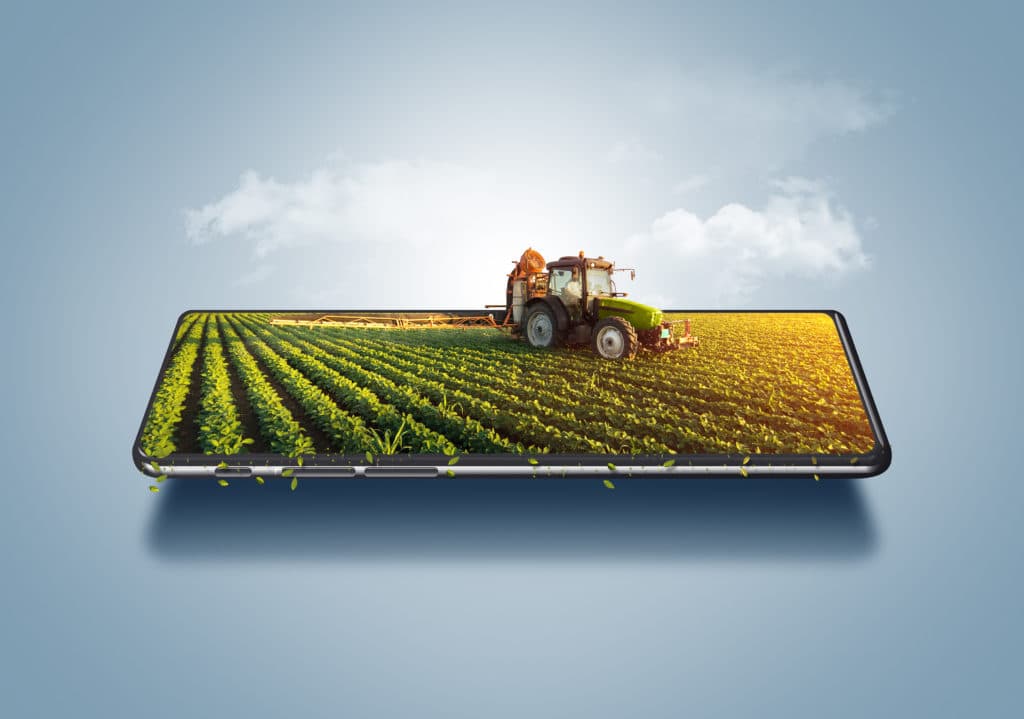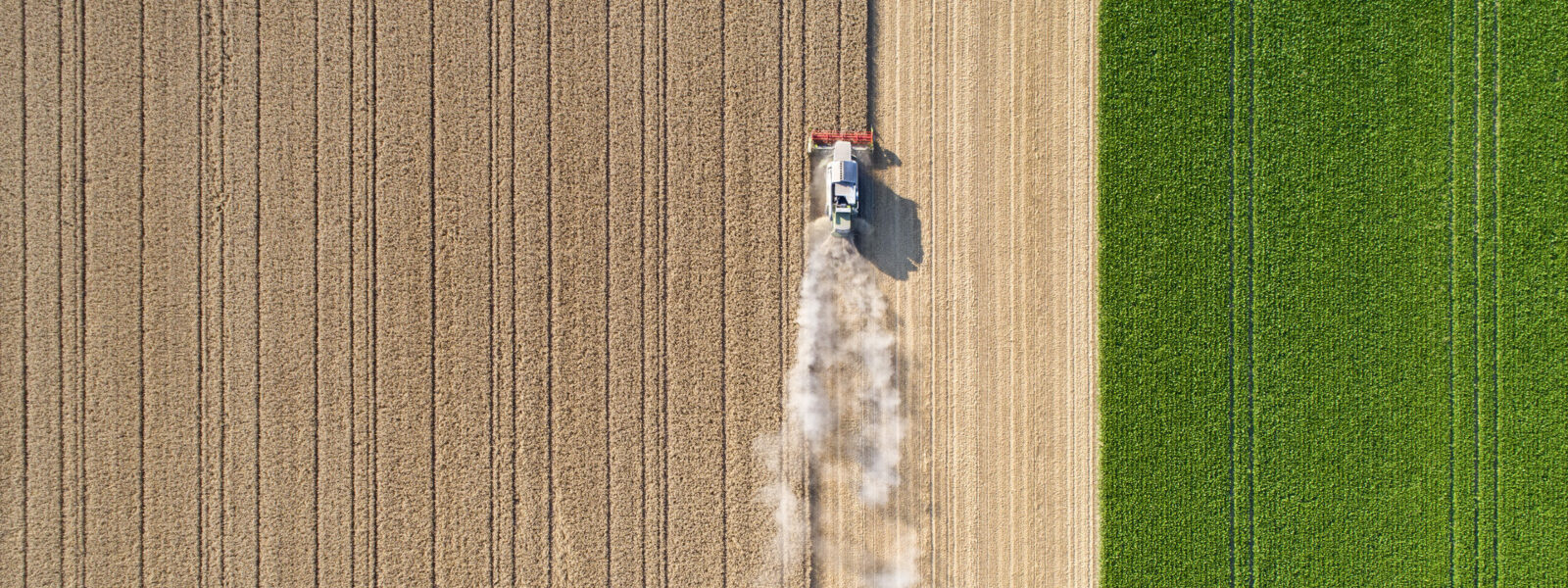Will agriculture find its salvation in mathematics?
- In agriculture, serious issues lay ahead: food security, agro-ecology, decarbonisation, soil restoration.
- Nitrates and mechanisation may have previously allowed a spectacular increase in agricultural productivity, but they rely on the use of hydrocarbons.
- Maintaining high productivity while greening agriculture is possible by reasoning at the scale of the food system and by improving coordination between producers, consumers, distributors, and financial investors.
- The issue is therefore to model better: more data, better shared and better used, with more complex models, integrating agronomy, climate, and markets.
- The mathematisation of agriculture will be possible through a European food platform, allowing data to be shared between all the
players
To think about tomorrow’s agriculture, you insist on the need to think in terms of the food system. Isn’t that forgetting the heart of this system, production?
No. It’s to come back to it and to open up spaces for reflection. The “food system” is at the heart of different processes: distribution, consumption, and production. Production used to be a direct function of three factors: soil, animals, and humans. All of these have been made more productive with mechanisation and nitrates (i.e. hydrocarbons). In a way, we are eating oil! The question today is: can we maintain this productivity without oil? And it is very difficult to answer if we look at production alone.
If we think in terms of the farm itself, one possible answer is low tech; a return to practices that existed before mechanisation. But the question of productivity soon comes up, and with it the question of cost.
Another response is to increase technological intensity. But this still poses many problems: it is not easy to extract beetroot with a robot. And energy remains the key issue, even if we can imagine a shift to electricity.
On the other hand, if we broaden our thinking from the farm to its wider context, and in particular the food system, other possibilities appear. We can optimise organisation, making sure that agriculture is better integrated into food and finance chains. There is a lot of potential here because we are talking about a poorly organised, fragmented and poorly modelled world, where many decisions are taken in a non-cooperative way.
How can we improve cooperation: more state, more market?
To optimise the way things are organised, public policies are needed. The issue of food security has been an invisible problem in the public arena for several decades, but just because the problem has been solved does not mean that it will not arise again. Questions of food sovereignty will come up again soon, as climate change will put a strain on production systems.

However, it is certainly not a question of centralising everything as we saw with Gosplan, the disastrous results of which are well known in agriculture. Rather, the challenge is to bring about better coordination between players whose interests are not currently aligned.
Hence, one of the horizons is a platform for European food, with a certain amount of data shared between all the players within the next thirty years. The platform will supply the major distributors and will also allow financiers to carry out risk analysis. Platformisation allows the mathematisation of agriculture. It is the key to better organisation. The challenge is to make the different chains (production, distribution, financing) more collaborative and to have new decision-making tools. To do this, it is important to model these chains from end to end, from the farm to distribution and investment funds, and to equip the decision-making processes at all geographical levels. We need to put maths at the service of agriculture.
Is this a return to the spirit of the agricultural cooperatives that marked the modernisation of European agriculture after 1945?
Yes, in the sense that the cooperative model in Europe compensated for the fact that farms were too small by making it possible, for example, to pool equipment: modernisation and cooperation went hand in hand and a new level was reached. These cooperatives, some of which have become very powerful, were organised as buying and selling groups, with some advice.
But the virtuous side of this model was undermined by two phenomena: the first is that it belongs only to the farmers. The second is that European agriculture has been organised in silos, and that it has been organised within the framework of an agricultural production policy. Public policies have thus created a clear separation between production and food, which can still be seen today in the Green Deal.
It is time to reconcile them, and mathematical models are capable of doing so. Platformisation and modelling offer a way of managing collective decisions and introducing more rationality into them.
The agri-food sector optimises its logistics and industrial processes and forecasts its food sales using models. But nothing is coordinated.
Yet many models are already used on farms today.
Yes, but they too are marked by an incredible fragmentation. Agricultural expertise is stored in thousands of small tools, spreadsheets, mini-simulators, small calculators, developed ad hoc by farmers, technical institutes, associations, agri-food manufacturers, cooperatives or laboratories, without any consolidation. These tools are generally “outside the information system”, i.e. they are not fed into any recurrent data flow. They are also not very user-friendly, due to a lack of investment, and are mostly unused. Last but not least, what they lack is a systemic approach.
On the technical side, plant and animal genetics are modelled, as well as fertiliser and plant protection product prescriptions. On the financial and agricultural accounting side, risk scores, performance indicators and business plans are modelled because of regulatory models. But agriculture has no systemic model at the level of individual farms. Decision support tools generally model only one facet of the living world: the control of a particular disease, the implementation of a particular practice, in short, a very small part of the overall system.
The agri-food sector optimises its logistics and industrial processes and forecasts its food sales using models. But nothing is coordinated.
As for the models used by public policies, they are obsolete and serve to distribute subsidies. They are models of economic flows and balances that look to the past and ignore the agronomic dimension. We are thus deprived of the tools to steer the Green Deal, which explains why ideology takes precedence over reality: the figure of 30% less pesticides is thus a political figure, which is not supported by data. In terms of data and modelling, everything remains to be done.
Does the energy and environmental transition offer an opportunity to move to new models?
It leaves us no choice. The problems of poor coordination, fragmentation and the separation of production and food largely explain the condition of European agriculture. It is a sector that is poorly financed by the private sector and supported by public funds, which is wondering about its future and finding it hard to invest.
Yet the real problems are ahead of us: food security, agro-ecology, decarbonisation, soil restoration. Everything needs to be done, in a context marked by climate change, tensions over raw materials and probable turbulence on the world markets for agricultural and food products.
Agriculture, which had been simplified at the cost of carbon and subsidies, has suddenly become what it was: a complex activity, because living things are complex. And food is a very complicated subject. The sector now has to deal with contradictory injunctions that place it on the threshold of a major disruption.
From the new geopolitical situation to the rise in the price of energy and therefore of inputs, all the elements are present for a crisis, with domino effects. Even a minor element such as environmental labelling contributes to destabilising the system.
This major disruption opens up a field for creating new models, and the technology is there: without waiting for platformisation, we are now capable of creating and running models that are sophisticated and rich enough in data to allow mathematisation of production, but also of consumer behaviour and financing – this last issue being crucial to accelerate the transformation.
If we need to model, it is because we are collectively blind, and we look to the past when the challenges are ahead. The actors are aware of what awaits them. The question for them is now to organise themselves to avoid taking the wave head-on.















